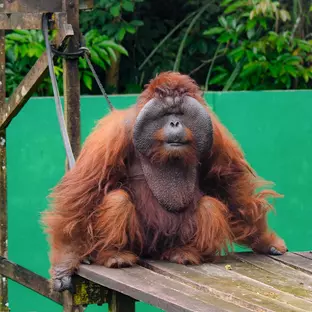Every year, the 16th March plays host to a whole day dedicated to the adorable Giant Pandas! The day is committed to spreading awareness for the need to protect these animals whom, it is no secret, are a listed endangered species. National Panda day aims to communicate to the rest of the world that deforestation is destroying the Panda habitat and putting them at risk. Well known for their famous bamboo diet (which unsurprisingly involves consuming huge amounts of bamboo), these animals although protected by some laws in China, are still an example of how humans are severely impacting upon the panda habitat. If Pandas have a chance of recovering from their current endangered state, conservation efforts must be increased to achieve this.
Why Are Pandas Endangered?

The world famous Giant Panda is considered a national treasure in China, but roads and railroads continuously fragment their forest home. Because of this, panda populations are isolated which can prevent mating and restricts crucial access to the bamboo that the bears need to eat to survive.
Over the years, awareness of the Panda’s protected status and laws in China has expanded, and things have become much stricter regarding this. Fortunately, poaching the animals for their fur has been restricted as a result of enforcing these laws. However, poaching and hunting stands as an ever-present threat, and hunters pursuing other animals will continue to kill the black and white bears accidentally.
As it stands, there are less than 2,000 Giant Pandas left in the wild; 1,864 according to WWF. This puts them at a vulnerable risk of becoming extinct. Organisations around the world are putting in efforts to build a sustainable habitat for these creatures. This involves increasing the areas of panda habitat that are under legal protection and building local facilities for nature reserve management.
What Is The Panda Habitat Like?

In the wild, Pandas are found in the remote mountainous regions of China. The habitat is perfectly suited to the needs of these majestic bears as there are cool, wet bamboo forests for them to roam and eat in. They live in dens which they make from hollowed out logs or stumps of conifer trees that they acquire from the surrounding forests.
Pandas are lone rangers and they like their own territory. They tend to claim a territory of approximately 5 square kilometres which they mark by secreting a waxy scent marker which they rub all over the area.
Can You Tell Me More About Baby Pandas?

Giant Pandas mate in the spring and the female will be pregnant for 100 – 180 days. A baby panda is called a cub, and a mother panda can birth up to two cubs at a time. They weigh in at birth at only 3 – 5 ounces, which is the equivalent of 85 – 142 grams! In comparison, they weigh only 1/900 of their mother’s weight. They have a fine coat of fur at birth so can sometimes appear pink in colour and they will not open their eyes until they are up to eight weeks old. The ability to see is not something a Panda is born with, they are born completely blind, helpless, and dependent on their mother.
Like human babies, new-born pandas have no ability to stand as their limbs are too weak. Baby Pandas are completely dependent for two months after birth. All they do is feed on their mother’s milk, sleep and go to the toilet!
The babies begin to crawl after three weeks, and by the time they are three months old they can walk roughly a meter and their hearing would have started to improve. Their bamboo diet takes place when they are six months old and are starting to become playful with their mothers. By the time they are two, they leave their mothers to fend for themselves.
Wild female Giant Pandas become mature enough to mate between the ages of 5 and a half to six and a half years. The male however will become mature between the ages of 6-7 years. Males will track a female by responding to scents and vocalisation. When the female Giant Panda is in oestrus, her glandular secretions and urine are different to when she is not, so the males are fully aware of what is going on!
Hit Me With Some Panda Facts!

- The Giant Panda is one of the shyest animals in the world
- They are lone rangers- they hate other panda’s company so much that they will often come into conflict if they meet in the wild.
- Pandas have an extra digit on their hands to help them to tear bamboo, and their gut is covered with a thick layer of mucus to protect against splinters.
- They are very skilled tree climbers with broad paws with retractile claws to help grip when climbing. They climb higher for food in the summer season or retreat in trees when hiding from predators such as brown bears, leopards or wild dogs.
- They do not hibernate but take shelter in caves and hollow trees in very cold weather.
- The Giant Panda is part of the bear family whilst the red panda belongs to the raccoon family.
- Pandas' bones are twice as heavy as other animals of the same size.
- Many Chinese philosophers think the panda represents the opposing Yin and Yang forces with its black and white fur; they believe the tender nature of the panda demonstrates how peace can be achieved when the Yin and The Yang are balanced.
How Can You Celebrate National Panda Day?

There are many simple ways to celebrate the day and raise awareness for these beautiful creatures. You can post about it online or wear panda inspired Clothing. There are some other ways you can get involved too! Here at The Great Projects, we run our Panda Volunteer Experience in Chengdu where you can volunteer and help these amazing animals. There are currently 40 Pandas at the centre waiting for you to come along to help with cleaning and feeding, so what are you waiting for? For more information please visit the project page.
Take a look at how cute pandas can be when they're waiting for their dinner! Also, why not share the infographic at the bottom of this page?















